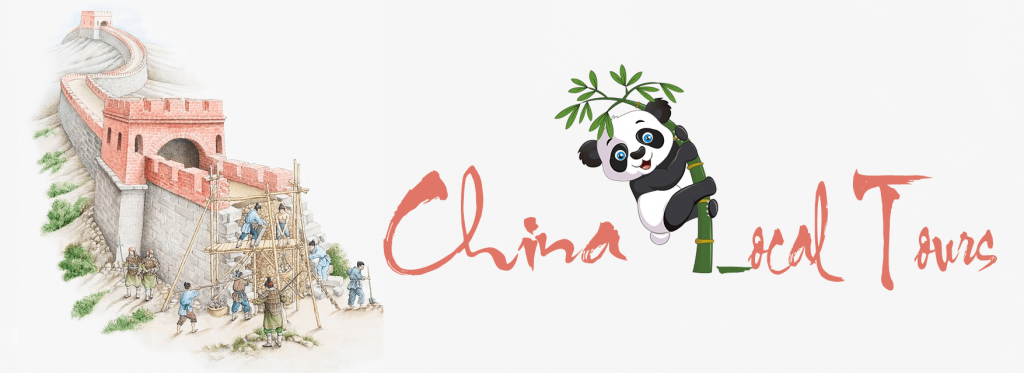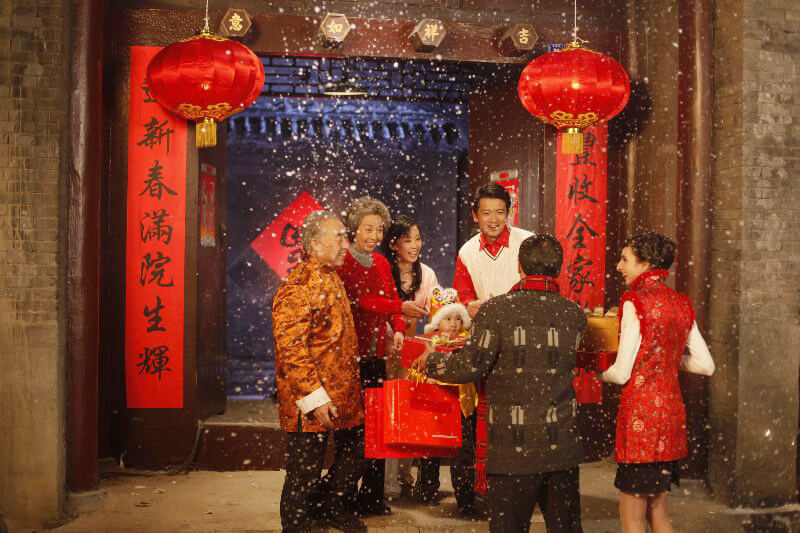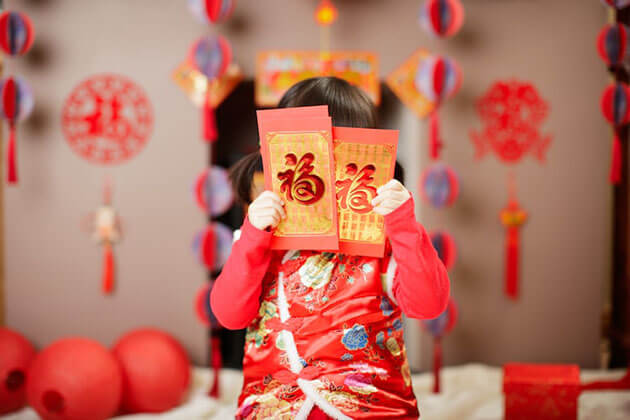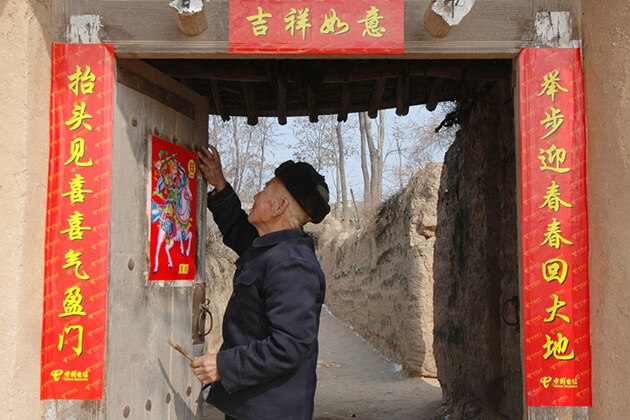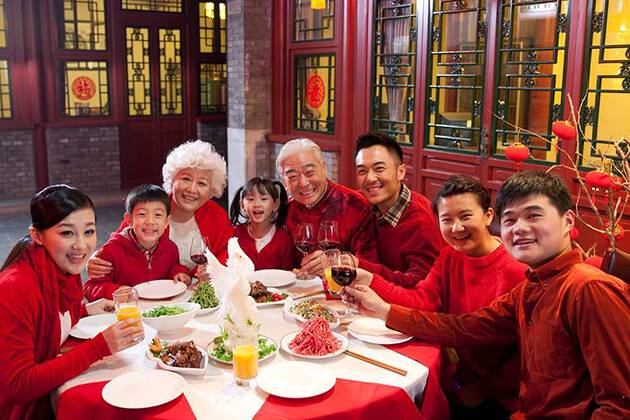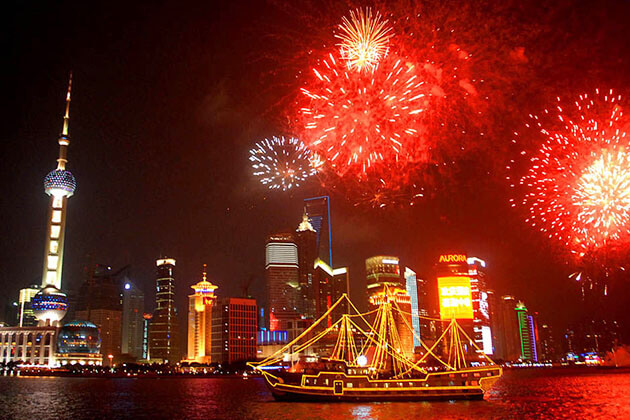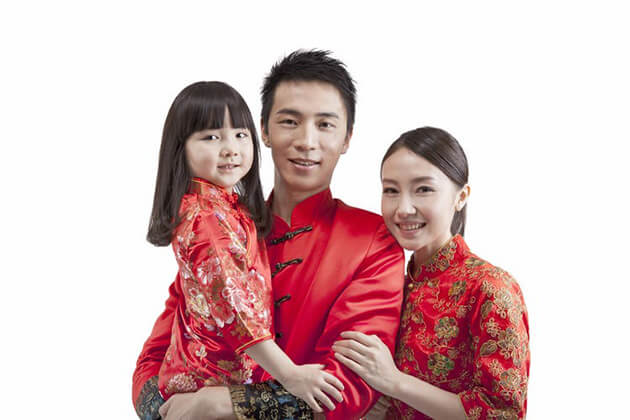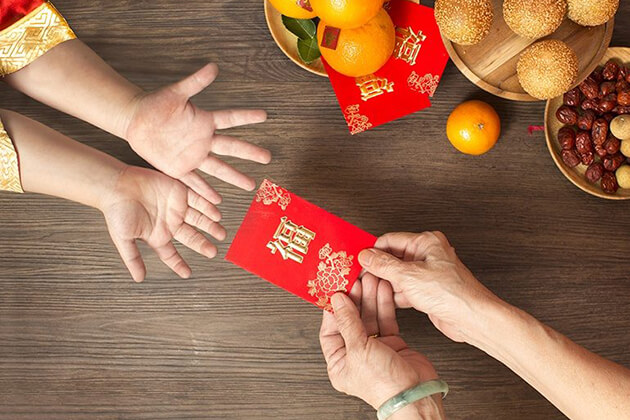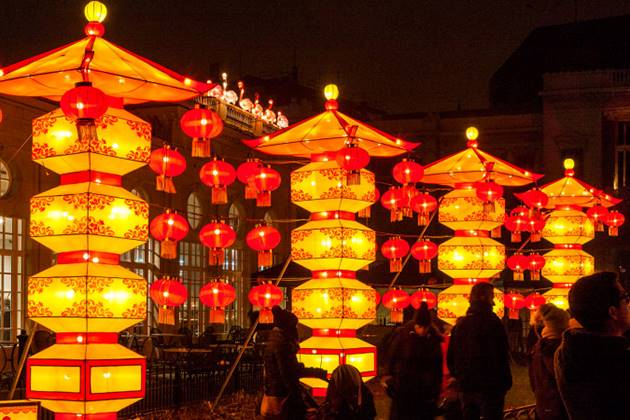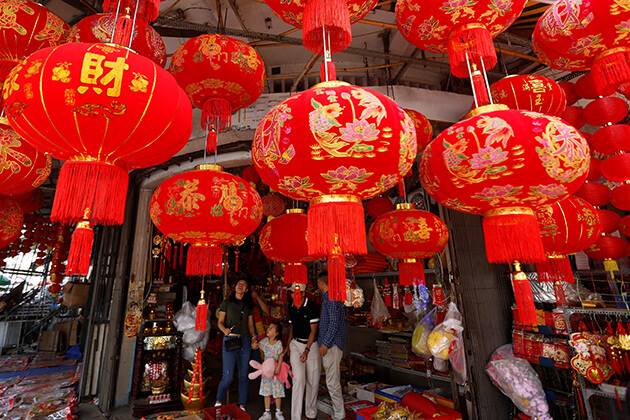The New Year is the longest and grandest festival throughout the year in China. In this colorful annual event, the whole country is dominated by a vibrant atmosphere, iconic red color lanterns, loud firecrackers, splendid firework shows, and massive parades. It is time for everyone to be home with family, gather around, chat, cooking, and enjoy hearty meals with beloved people. Therefore, this festival does play an essential role in the time-honored culture of one of the world’s oldest civilizations and is an excellent time that tourists might not want to miss to experience the authentic Chinese traditions and customs. If you are curious about this big event, so scroll down to have a closer look at the wonderful Chinese New Year and take some helpful advice for the trip to China during this time.
What is the Chinese New Year?
Chinese New Year or Spring Festival falls on the 1st day of the first lunar month and lasts until the middle of the month. Thus, unlike the western holidays like Thanksgiving or Christmas, there is no set date for the Chinese New Year if you try to calculate it with the solar system. For instance, Chinese New Year 2022 is on 1st February.
The event is a wonderful occasion for all Chinese families to gather for an annual reunion, celebrating the beginning of a year with the hope of fortune and success. Having a long history the festival is associated with several myths and customs in Chinese profound culture. Apart from mainland China, it is celebrated widely in regions and countries around the world with significant populations of overseas Chinese like Singapore, Indonesia, Malaysia, Myanmar, and many in North America and Europe as well. Also, its strong influence on the lunar new year celebration in many neighboring cultures including Vietnam’s Tet Holiday and Korean New Year is apparent.
Chinese New Year Celebration – Customs and Activities
Spring Festival Preparation - Half Month in Advance
A Thorough House Cleaning and Decoration
No matter in bustling cities or the tranquil countryside, you can tell the lively exciting atmosphere when the New Year Festival is approaching. All streets and lanes have a new glorious look with red lanterns and colorful lights. At houses, people start cleaning, decorating in preparation for the biggest event of the year about a half month ahead. It is the busiest time for Chinese diligent housewives to be in charge of a thorough clean of the houses, sweeping, mopping, wiping, washing, and numerous unnamed work. All the family members also give a hand with the chores, to make sure the house gets rid of all the last year’s dust and ready to take in the fortune of the New Year. The lucky red color is most favored for house decoration with lanterns, window paper-cut, “Fu” character pictures, Chinese knots, and Spring Festival couplets.
Before New Year’s Eve, Chinese people spend generously buying various food, snacks. New clothes, decoration, making it boom time for shopping. All street markets, supermarkets, and malls are crowded on the days leading up to the festival.
Ancestors Worshiping
New Year is also the time for the descendants to show respect and filial piety to their ancestors. It is based on the belief that the deceased family member will have a continued existence, and their spirit will take care of the family and have the ability to influence the fortune of the living. The descendants offer to the ancestors to keep them happy in the spiritual world and, in return, they will protect and bless the family. On New Year Eve, Chinese families worship the ancestors, invite them to join the celebrations, and enjoy the offerings of fruits, food, sweets, flowers, and tea before the reunion dinner.
New Year Eve Banquet – The Reunion Dinner
The principal focus of the Chinese New Year Festival is home. All Chinese people no matter the long distances manage to make their way back home at least by New Year Eve for the reunion dinner with all family members, which explains the huge travel throughout China during this time. The reunion dinner is a must-do thing in this event, big families including several generations gather around the table and enjoy the hearty meals. The menu of a Chinese New Year Feast contains symbolic dishes with lucky meanings, such as Tangyuan (Sweet Rice Balls) representing family togetherness, Dumplings, Spring rolls for wealth and prosperity, Fish to bring the surplus every year, Niangao ( Glutinous Rice Cake) for higher income and promotion in the coming year, Longevity Noodles presenting happiness and longevity, etc.
Watching CCTV’s New Year Gala
The CCTV’s New Year Gala has become a habitual background to reunion dinners of many Chinese families. Despite the declining viewership in recent years, it is the most-watched television special on the big night. The live broadcast starts from 8 p.m and lasts till midnight when the New Year arrives featuring wonderful traditional, folk, and pop music, delightful dance, comedy, opera, and acrobatic performances from China’s best artists.
Setting off Firecrackers and Fireworks
At the moment the New Year arrives, the New Year bell on TV gala strikes, but you can hardly hear it in the cacophony of fireworks and firecrackers all around no matter in the modern cities or rural countryside. Chinese families have a long tradition of setting off the firecrackers to scare away the legendary monster Nian which emerges at night. It’s also believed that the louder the firecrackers, the better and luckier the business of the family will be in the upcoming year. However, in recent years, many urban areas ban firecrackers or set special areas or periods for fireworks in concern of the accidents and threats to air quality.
Chinese New Year
Wearing New Clothes and Pay an Extended Visit to Relatives
On the first day of New Year, Chinese people put on their new clothes and say “Gongxi” which means Respectful joy in Chinese, to wish the other good luck and happiness throughout the New Year. In China, the second day is for married couples to visit the wife’s parents, and the following days will be spent in other relatives’ houses Traditionally, the younger generation will come to the elders and wish them health and longevity. It is a ritual to bring gifts and give red envelopes to the kids when visiting other homes. This grand greeting will extend to half a month. In some rural areas, half a month is barely enough to visit all relatives of a big family.
Red Envelopes – Giving Best Wishes through Money
It is a tradition that seniors give lucky money wrapped in red packets to all children from newborn babies to teenagers. It comes from an old legend of a monster known as Sui who appeared on New Year Eve intending to harm children. It is said that God sent eight guards disguised as coins to protect the children in response to the sincere praying of their parents. Thus, people threaded eight coins in a string and placed them under the children‘s pillows. This became an annual custom, preventing the Sui monster from coming near. As time passed by, the paper notes replaced the coins and the red envelope for the thread but remaining the purpose of dispelling the evil spirits from the children.
Children are looking forward to receiving Red Envelopes at every Spring Festival. Nowadays, the blessing of lucky money is also shared with the elders as a gift to show respect, relatives, and sometimes friends. Also, thanks to modern technology, the digital red envelopes are popularly sent with text messages, voice messages to give the best wishes to beloved people.
Public Celebrations at Temple Fairs
Generally, temple fairs at the time of Chinese New Year are excellent places to have a closer look at one of the world’s major traditions. Temples are busy and bustling at this time, people come to pray deities for blessings and good fortune in the year ahead as well as to enjoy the festive celebration with costumes performances, traditional games, and local snacks. Many major temples also put on the colorful and exciting Dragon and Lion Dances in the courtyard.
Lantern Festival- Excellent Ending of Spring Festival Period
The jubilant Lantern Festival is held on the 15th day of the first lunar month, marking the ending of the Chinese New Year Period. The festival features beautiful lanterns of various types and shapes which demonstrate Chinese folklore vividly at the night of the full moon. Besides magnificent traditional performances adding great fun to the celebration, visitors can join guessing lantern riddles, an exciting intellectual activity enjoyed by people of all ages. It is traditional to indulge in Yuan Xiao, a dumpling ball whose shapes represent reunion, happiness, and harmony.
Chinese New Year Celebrations in the World
Do you know that a quarter of the world's population, over 2 million people celebrate Chinese New Year? Apart from mainland China, Hong Kong, Macau, and other Asian countries like the Philippines, South Korea, Singapore, Vietnam, etc. have public holidays at that time. You can also experience the vibrant atmosphere of the Chinese New Year Festival in Los Angeles, San Francisco, New York, London, Paris, and so on. Walk into the Chinatowns to witness all restaurants and shopfronts adorned in red and gold, loud firecrackers, colorful parades, and dragon dances.
Travel during Chinese New Year – Things You Should Know
Visiting China in the period of the New Year celebration, you will have the chance to immerse yourself in various traditional activities. It is great to join a Chinese family celebration to experience the authentic Spring Festival. But traveling to the country with a sheer population at the time of the grandest holiday? Of course, you must plan your trip properly, carefully, and get well- prepared first. Find below the key points that visitors should pay attention to in their China tour during such a big event.
- Crowded Transport: There will be large crowds at every transit of China at this time of the year, particularly in the major transportation hubs like airports, railway stations, and bus terminals. Remember it is the huge peak of country travel with an amazing volume of three billion passengers making their way home. Tickets might be sold out and perhaps a week or more above with train tickets, and buses both regional and locals ones are overcrowded.
- Shop Closes: In contrast to the incredibly vibrant and bustling atmosphere with promotions and processions filling up plazas and blocking sidewalks the days before New Year Eve, shopping malls show such a big lull on the first days of the new year when almost everyone seems to stay at homes and most businesses shut. Fortunately, many major restaurants, attractions, hotels, and most tourist-related enterprises still open and ready to serve more customers.
- Busy Hotels: In winter, many hotels will offer low prices to attract tourists. Therefore, rooms in popular cities in China might be fully booked far in advance. Make a good move and reserve your accommodation as early as possible.
- Soaring Prices: Given the large demand from throngs of people, while the resources are limited, restaurants can be crammed, and then naturally the prices are on the increase.
Tips for Traveling during the Chinese New Year Holiday
Take a glance at the following collection of helpful tips that can save many tourists from the most congested transportation and destinations as well as the frustrations from a lack of proper planning when enjoying their time in China during the Spring Festival.
Stay away from Railway Travel
Cheap and efficient, the railway can be an excellent means of transportation for tourists in the year but not a good option at the time of the Chinese New Year. A large number of Chinese take train home on the holiday, so tickets might be sold out far in advance, the likelihood to find a space on a train is minimal, and even though the space is available, ask yourself whether you can be comfortable while being tightly confined among the people who do not speak your language. Flights might be a better choice this time.
Make a Good Arrangement Beforehand
This tip will save you from a lot of troubles and hassles during the trip to China. Bear in mind to reserve as many of your flight tickets, accommodations as possible. Of course, you had better book your flight tickets followed by the hotels. Otherwise, you might be charged for the rooms you do not occupy. There is no other choice. If you are looking for a loose, carefree, and unplanned journey to China, plan for other times like the summer season when the competition for accommodation is much less acute compared to around the public holidays.
Best Places to Go
Chinese New Year is the best time to experience the culture of one of the world’s oldest civilizations. Thus, we recommend you Beijing, Xian, and Pingyao featuring the traditional celebration of North China as well as Guangzhou- the representative of south China folk customs. Besides, Harbin is also a good option to set your foot into during January to enjoy the exciting ice and snow activities.
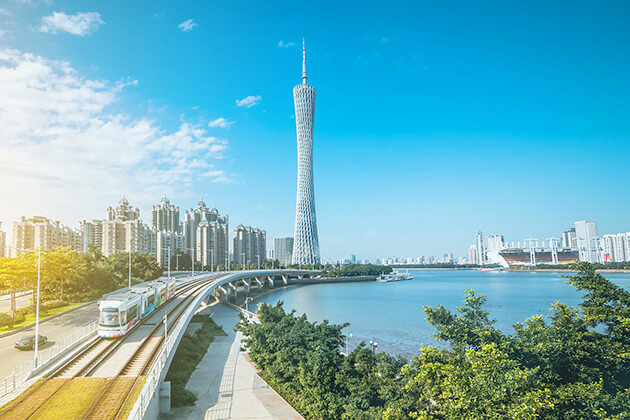 Pack up Warm Clothes
Pack up Warm Clothes
As a large country with variation in climate among different parts, your packing up will depend on the places you would love to visit. As north China is very cold during New Year with the temperature in Beijing around -10 to 5 degrees Celsius, wool sweaters and a thick parka or down coats are needed. In the south, the weather change frequently, mild by day and cold by night while south sea islands like Hainan are warm, layered clothing like sweaters, jackets with removable linings, windbreakers is the best solution that allows you to adjust well to the climate conditions.
During Spring Festival, you might feel stressed in your China tour when encountering too many petty incidents or having too many people around but still keep showing flexibility, maintain the cheerful spirit, which will help to increase the chances of making satisfactory arrangements and of course make it easier on yourself.
